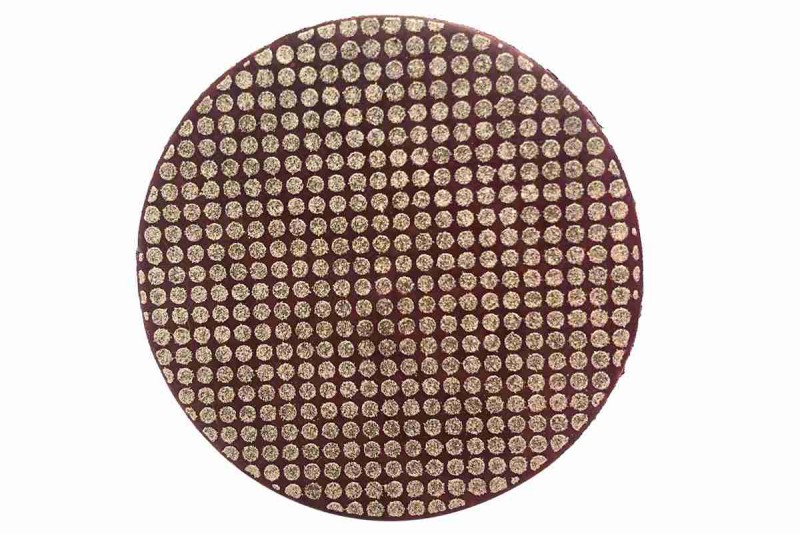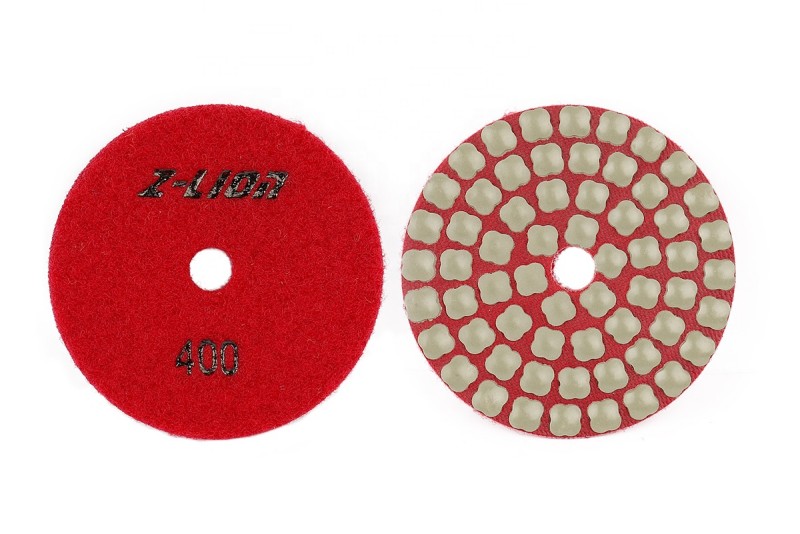What Should I Use for Pre-Polishing?
Achieving a pre-polish effect on a concrete or stone surface is a critical step in the polishing process. It sets the stage for a high-gloss finish and ensures the final polish is correct. While electroplated diamond pads are often used for initial grinding, they may not provide the desired pre-polish effect, even with finer grits such as 1500. Instead, transitioning to resin-bonded diamond pads is critical to achieving a sufficiently fine polish. Best practices for achieving a pre-polish effect are detailed below.
Understanding Diamond Pads
1. Electroplated diamond pad:
These pads are designed for aggressive grinding and remove material quickly and efficiently. However, they may leave a surface that is too rough to polish.
While they can be used up to 1500 grit, they do not provide the smooth surface required for the next step in the polishing process.

2. Resin bond diamond pad:
Resin bond pads are softer and designed to provide a finer finish. They achieve a smooth surface and are ideal for polishing.
These pads can have grit as low as 100, but their primary function is not heavy grinding. Instead, they are best used for light removal or cleaning surfaces that have been treated with electroplated diamond.

Transition from Electroplated Diamond Pads to Resin-Bonded Diamond Pads
1. Electroplated diamond pad:
Start with an electroplated diamond pad, which is designed for aggressive material removal. These pads are effective for sanding down rough surfaces and are available in a variety of grits, including 200 grit.
While electroplated pads are great for initial grinding, they may not provide the fine finish needed for polishing.
2. Turning to resin bond diamond pad:
After using electroplated pads, transition to resin-bonded diamond pads. For example, you can transition from a 200-grit electroplated diamond pad to a 220-grit resin-bonded diamond pad. This transition allows you to further refine the surface.
Resin bonded pads are softer and designed to provide a finer finish. They are ideal for smoothing surfaces after pre-treatment with electroplated diamond.
3. Polishing technology:
Apply the resin bond pad using a consistent overlapping pattern to ensure even coverage. This technique helps avoid uneven wear and ensures an even finish.
Keep the surface moist during polishing to reduce dust and increase the effectiveness of the polishing pad.
4. Final pre-polishing step:
Continue using finer and finer resin bond pads until the desired pre-polish finish is achieved. The surface should feel smooth to the touch and have a slight sheen.
Once the desired effect is achieved, clean the surface thoroughly to remove any residue from the polishing process.
The Function of Resin Diamond Hand Pad
Purpose: The resin diamond hand pad is specially used to grind rough surfaces into a pre-polished effect. It is especially effective when used after electroplating diamond hand pads.
Light surface work: While resin diamond pads can be used for light surface work and blemish removal, they are not designed for heavy material removal. Even with a coarser grit like 100 grit, they will not effectively abrade a surface on their own.
Combination use: Best practice is to use a resin bonded pad in conjunction with an electroplated diamond. This combination allows you to smoothly transition from a rough surface to a pre-polished finish, ensuring the surface is fully prepared for the final polishing stage.
Common Confusion
One of the biggest confusions regarding diamond pads is their intended use. While resin-bonded diamond pads are available in grit sizes as low as 100 grit, they are not designed for aggressive grinding. Instead, they are designed for light-duty tasks and should be used after the surface has been adequately prepared using an electroplated pad. Attempting to use a resin-bonded pad for coarse grinding will result in an uneven surface, as the softer resin will quickly wear away, releasing the diamonds prematurely.
In Conclusion
In order to successfully complete pre-polishing, it is crucial to understand the role that different diamond pads play in the polishing process. Start by using electroplated diamond pads for aggressive material removal, then transition to resin-bonded diamond pads for fine polishing. By following these steps and using the correct tools, you can achieve a smooth polished surface ready for the final polishing stage. This approach will not only enhance the appearance of materials such as concrete and stone but will also ensure the durability and longevity of the finished product.
-
Online service
-
Official wechat account

-
QQ:40933769
-
E-mail:sales@z-lion.com
Online Message
Please feel free to give your inquiry in the form below. We will reply you in 24 hours.

